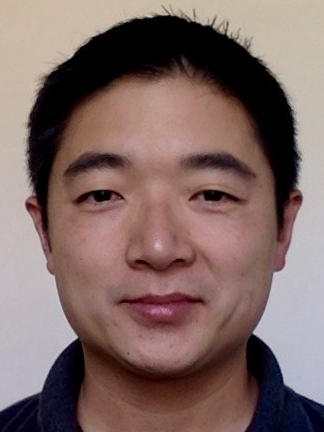STAC Summit, 15 May 2019, London
STAC Summits bring together industry leaders in ML/DL engineering, data engineering,
system architecture, application development, infrastructure engineering, and
operational intelligence to discuss important technical challenges in the finance industry.
Come to hear leading ideas and exchange views with your peers.
WHERE
Leonardo Royal Hotel London City (former Grange City Hotel)
8-14 Coopers Row, London EC3N 2BQ
Agenda
Click on the session titles to view the slides.
 Big Compute
Big Compute
 Fast Compute
Fast Compute
 Big Data
Big Data
 Fast Data
Fast Data
STAC Update: AI Workloads  |
|
|
Michel will discuss progress toward benchmark standards for ML/DL techniques and technologies based on problems that finance firms in the STAC Benchmark Council have said they care about. |
Panel: AI and the engineer  |
|
Financial firms are increasingly using machine learning or deep learning (broadly, “AI”) to improve outcomes or automate functions. Like many other key components of a business plan, AI is a team sport. A brilliant researcher can't be productive without a lot of help with data, technology, and process management. Fortunately, many of these skills exist already in the finance industry, whether it is managing large amounts of data, designing systems for high performance, or managing uncertain processes in an agile way. What are the key engineering and development skills needed on effective data science teams? What technologies are most crucial to understand today and in the near future? How much data science knowledge does a technologist need in order to be a highly effective data engineer or ML engineer? Which parts of the process are most likely to be automated, purchased, or outsourced in the near future, and which parts will continue to rely on in-house (human) technologists? Our panel will debate. |
Tips on delivering agile AI  |
|
|
Delivering end-to-end AI solutions is a complex, multi-step process. Studies show that many firms struggle with one or more of these steps. The challenges increase in heavily regulated environments like financial services. Kortical is a startup that has built an AI-as-a-service platform from which it serves enterprises in multiple industries. In this talk, Alex will walk through the process of delivering effective AI once data has been prepared—from feature engineering, through model training, tuning, and backtesting, to deployment and life-cycle management of models as APIs—highlighting some of the key challenges and providing tips to overcome them. |
Grokking the TCO of high-performance systems  |
|
|
When studying the ROI of new technologies, firms pay great attention to the "R", such as: how much a new architecture will reduce time-to-market for our models/enable us to meet new regulatory requirements/improve our data scientist productivity/etc. But quantifying ROI also requires truly understanding the "I". This may sound simple, but it can be complex for high-performance systems such as HPC grids, machine learning clusters, or big data farms. The total cost of ownership (TCO) of such systems involves many technical and human elements, even if the system is based in a public cloud. At NAG, Andrew spends considerable time advising organizations on how to model the TCO of potential investments in order to guide decisions. In this talk, he will propose a TCO calculator and take audience feedback on it with respect to different use cases important to financial firms. |
STAC Update: Big Workloads  |
|
|
A lot of innovative solutions for big data and big compute workloads like enterprise tick analytics, strategy backtesting, and market risk are being subjected to STAC Benchmarks. If he can catch his breath, Michel will take us through the latest research. |
Compute, meet Data: Accelerating I/O at the micro and macro level |
|
Ever-increasing demands from the business, the growth of new AI workloads, and the increasing pull of public clouds call for faster and more flexible ways to get data where it’s needed in computations. Fortunately, the vendor community is competing and collaborating to solve these problems. Innovations include standards like NVMe and NVMe over Fabrics, persistent memory with interesting properties, new and enhanced distributed file systems, rapidly evolving cloud services, and products that claim to substantially mitigate problems we expect when compute and storage are separated by long distances. Sorting through this Cambrian explosion of offerings is a good problem to have, but a problem nonetheless. How should application developers think about memory and storage today? What’s possible with file, block, and object storage? When is public cloud a realistic option, and when not? What are the promise and perils of disaggregated storage? Our panel of experts will debate. |
STAC Update: Fast Data |
|
|
Peter will discuss the latest research and Council activities related to low-latency/high-throughput realtime workloads. |
A faster and fairer financial cloud |
|
|
As financial services firms rapidly increase their use of public clouds for large batch computation, another swathe of use cases—realtime trading—lies in wait. If major markets and their participants could start trading in general purpose public clouds, the promise is both lower cost colocation and the ability to integrate the fast loop of live trading with cloud-scale analysis for faster adaptation of algorithms. But these realtime workflows require low latency, high throughput, and determinism. Some ingredients are emerging in the cloud, such as bare metal instances and realtime market data feeds, but a missing link has been accurate timestamping. Even before regulations like MiFID 2 and the CAT NMS plan began dictating accuracy requirements, trading firms and venues have needed highly accurate timestamps to understand, prove, and improve what happens in their realtime systems. Dan will argue that machine learning-based synchronization algorithms can make such accuracy—even nanosecond accuracy—feasible at cloud-scale. He will also argue that in cases where fairness is a key requirement, such as exchanges or internal matching, the real answer is not deterministic latency but rather highly accurate timestamps that can give commodity, best-efforts networks the effective determinism of a high-performance network. |
Panel: State of the art in high-speed capture  |
|
Wire capture is a crucial element of trading systems today, with the resulting data serving as a source not only for operational monitoring but also for the development and backtesting of trading strategies. And like other parts of a trading system, capture architectures can't stand still. In an interactive session with the audience, our panelists will debate key questions like: how are 40G and higher bandwidths affecting requirements? how is the end-to-end workflow evolving, from timestamping and aggregation to capture, replication/distribution, and analysis? how are people balancing speed of capture and speed of retrieval? what impact will recent advances in storage and memory have? what’s changing in the monitoring industry and in the build-vs-buy equation? |
About STAC Events & Meetings
STAC events bring together CTOs and other industry leaders responsible for solution architecture, infrastructure engineering, application development, machine learning/deep learning engineering, data engineering, and operational intelligence to discuss important technical challenges in financial services.
 |
 |
 |
|---|---|---|
Speakers
 James TromansGardening Leave
James TromansGardening Leave Dr Stephen WarrXR Trading Europe
Dr Stephen WarrXR Trading Europe
 Richard CroucherBarclays
Richard CroucherBarclays Dr. Darko MatovskicausaLens
Dr. Darko MatovskicausaLens
 Dr. Alex AllanKortical
Dr. Alex AllanKortical Andrew JonesNAG
Andrew JonesNAG
 Kristie MannIntel
Kristie MannIntel Stephen WestonIntel
Stephen WestonIntel
 John AshleyNVIDIA
John AshleyNVIDIA Derek BurkeWekaIO
Derek BurkeWekaIO
 Gurpreet SinghPavilion Data
Gurpreet SinghPavilion Data Tim O'CallaghanDell EMC
Tim O'CallaghanDell EMC
 Dan ZhengTick Tock Networks
Dan ZhengTick Tock Networks Dr. David SnowdonArista
Dr. David SnowdonArista
 Matt DaveyCorvil
Matt DaveyCorvil Dr. Matthew GrosvenorExablaze
Dr. Matthew GrosvenorExablaze
 James BarrettEndace
James BarrettEndace Roop GangulyBigstream
Roop GangulyBigstream
 Nick RogersBlackCore
Nick RogersBlackCore Laurent de BarryEnyx
Laurent de BarryEnyx
 Nadeem ZahidcPacket Networks
Nadeem ZahidcPacket Networks David TaylorExegy
David TaylorExegy
 Dave WeberLenovo
Dave WeberLenovo Matt MeinelLevyx
Matt MeinelLevyx
 Yves CharlesNovaSparks
Yves CharlesNovaSparks Jean-Arnold ChenilleauOrolia
Jean-Arnold ChenilleauOrolia
 Jean-Claude TaggerquasarDB
Jean-Claude TaggerquasarDB Cesar PradosSeven Solutions
Cesar PradosSeven Solutions
 David RiddochSolarflare
David RiddochSolarflare Steve WalloVcinity
Steve WalloVcinity


 Simon PonsfordYellowDog
Simon PonsfordYellowDog Michel DebicheSTAC
Michel DebicheSTAC Peter LankfordSTAC
Peter LankfordSTAC













